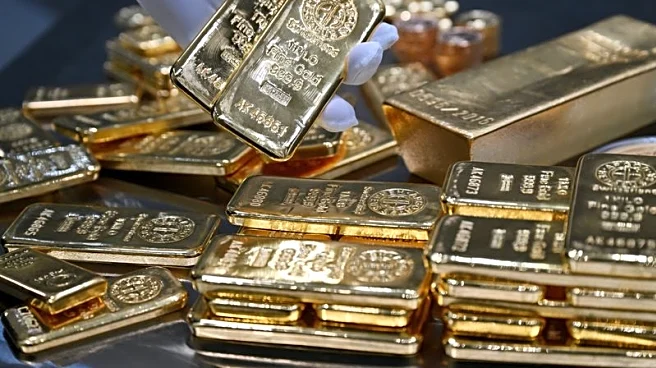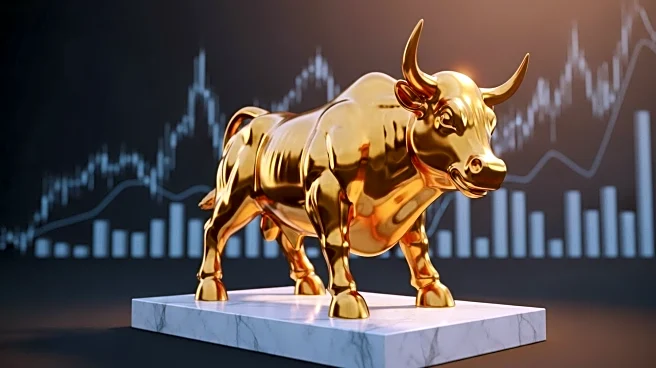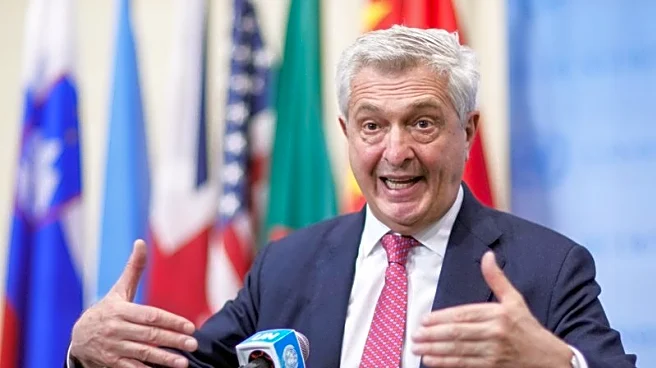What's Happening?
Gold prices have surged to a record high of over $4,000 per ounce, driven by global geopolitical and economic uncertainties. The ongoing conflict between Russia and Ukraine, as well as tensions in the Middle East, have contributed to this rise. Additionally, economic concerns in the U.S., including tariffs imposed by President Trump, have fueled investor anxiety. The Federal Reserve's policies and central banks' gold purchases have also supported the price increase. Analysts suggest that the current market conditions, including low borrowing costs and delayed rate hikes, have made gold an attractive safe haven for investors.
Why It's Important?
The rise in gold prices reflects broader economic and geopolitical tensions that could have significant implications for global markets. Investors are turning to gold as a hedge against uncertainty, indicating a lack of confidence in traditional safe-haven assets like U.S. Treasuries. This trend could impact various sectors, including finance and commodities, as investors seek stability. The continued demand for gold by central banks suggests a shift away from dollar-denominated assets, which could influence currency markets and international trade dynamics.
What's Next?
As gold prices continue to rise, market analysts are watching for potential sell-offs, although the current sentiment suggests further gains. The situation remains fluid, with geopolitical developments and economic policies likely to influence future price movements. Investors and policymakers will need to monitor these factors closely to assess the impact on global financial stability.











